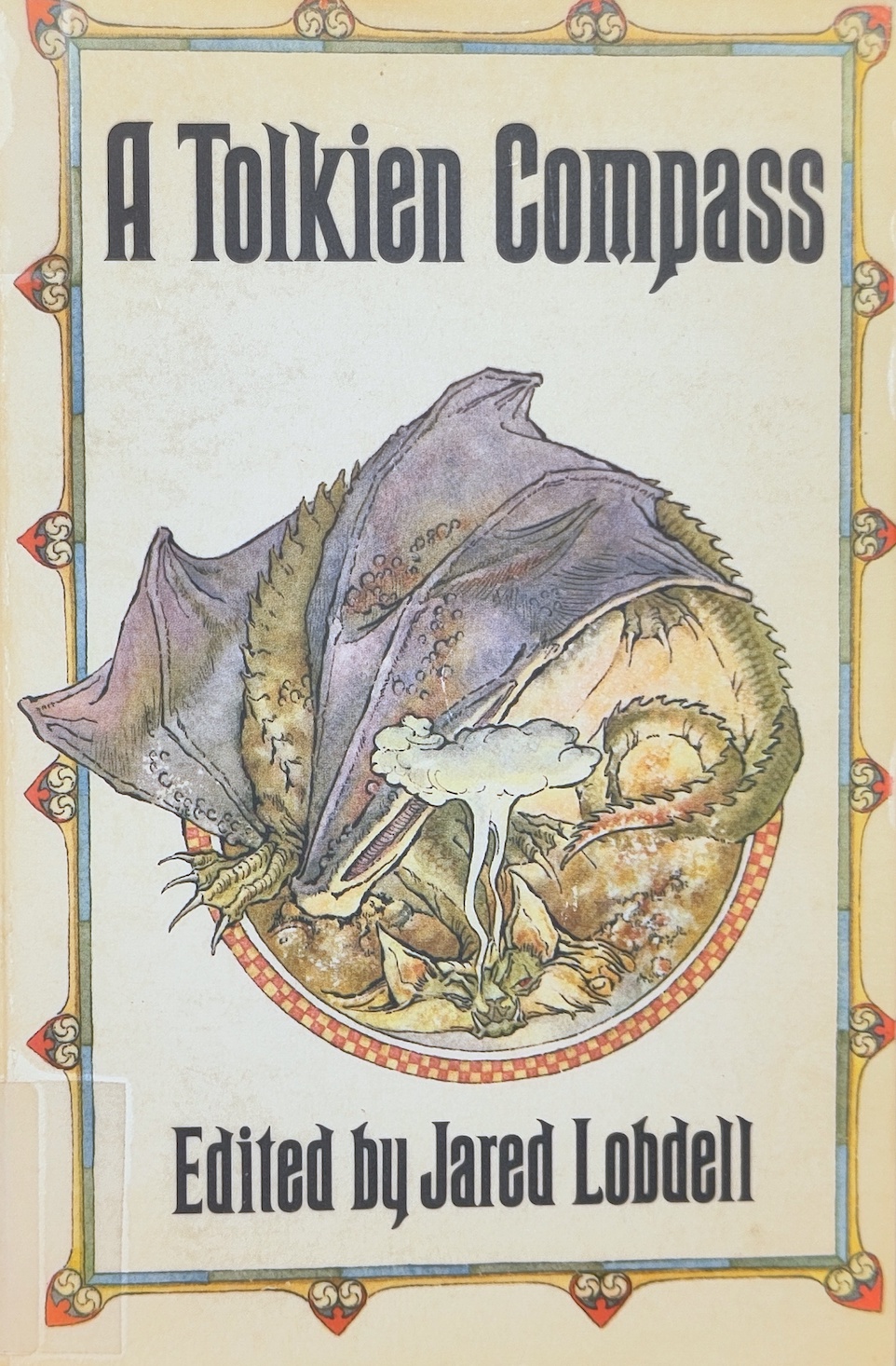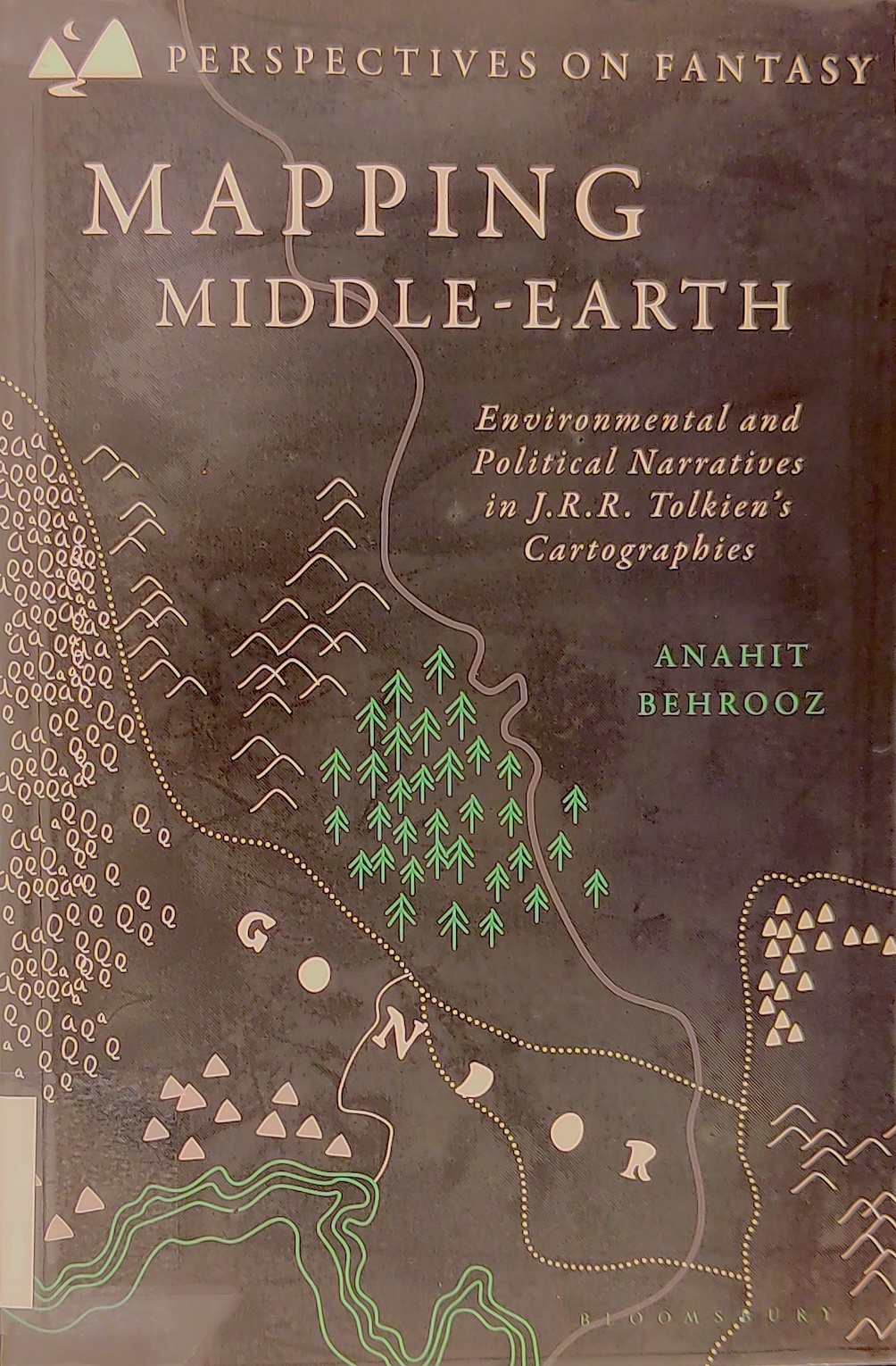Literary Criticism
Tolkien: A Look Behind the Lord of the Rings
In the 1969 work Tolkien: A Look Behind the Lord of the Rings, Lin Carter provides an exploration of the numerous myths and tales that inspired J.R.R. Tolkien’s The Lord of the Rings. In a first part, this volume traces the production history of the book series, links it to its predecessor The Hobbit, and meticulously summarizes all three volumes of the series. In a second step, it provides insights into Tolkien’s own philosophy regarding myth and fantasy, before finally delving into numerous mythologies that Tolkien relied on in the creation of The Lord of the Rings.
A Tolkien Compass
A Tolkien Compass, edited by Jared Lobdell, is a 1975 collection of critical essays about J.R.R. Tolkien’s most prominent literary works. The essays analyze aspects from The Hobbit and The Lord of the Rings, as well as Tolkien’s general mythology, by focusing on aspects such as “The Psychological Journey of Bilbo Baggins”, “Narrative Pattern in The Fellowship of the Ring”, and “Aspects of the Paradisiacal in Tolkien’s Work”. An Appendix contains J.R.R. Tolkien’s own “Guide to the Names in The Lord of the Rings”, which functions as a dictionary of character and place names within his work and a guide for translating them into other languages.
Reconsidering Tolkien
Reconsidering Tolkien, edited by Thomas Honegger, is a 2005 collection of critical essays about a broad range of linguistic and literary aspects in J.R.R. Tolkien’s work. It includes, among others, papers on “the Linguistics of Middle-earth”, on Tolkien as a philologist, on “Manifestations of Shadow” and “Mythic Space” in Middle-earth, and on the varying representation of Aragorn across adaptations.
This volume was published with Walking Tree Publishers, a Swiss not-for-profit association which exclusively publishes books related to J.R.R. Tolkien. Check out their website to explore more of their titles.
The Literary Role of History in the Fiction of J.R.R. Tolkien
In this newly published monograph, Nicholas Birns analyzes the role of history within J.R.R. Tolkien’s The Lord of the Rings. As such, he examines the fictional history of Middle-earth as told through the characters within the story, as well as through additional material, such as The Silmarillion. Further, Birns also considers the impact of real-world history on Tolkien, expanding the research in this field from the frequently analyzed northern European traditions to also include the influences that southern and mediterranean history had on Tolkien, and to analyze the interconnectedness of these histories.
Sub-creating Arda: World-building in J.R.R. Tolkien's Work, its Precursors and its Legacies
Sub-creating Arda (2019) is a collection of papers, edited by Dimitra Fimi and Thomas Honegger, that revolves around the worldbuilding within J.R.R. Tolkien’s literary works. The book, which features articles by various renowned Tolkien scholars, is divided into three sections, the first of which is dedicated to the theory of worldbuilding at large. The articles in the second section analyze specific aspects of Tolkien’s worldbuilding, such as geology, water, poetry, and dialogue. The third section of the collection studies the worldbuilding of other authors – from the Brontës, through James Joyce, to G.R.R. Martin –, while persistently keeping Tolkien in view and examining his worldbuilding practices in contrast with those of other authors.
This volume was published with Walking Tree Publishers, a Swiss not-for-profit association which exclusively publishes books related to J.R.R. Tolkien. Check out their website to explore more of their titles.
Tweaking Things a Little: Essays on the Epic Fantasy of J.R.R. Tolkien & G.R.R. Martin
Thomas Honegger’s 2023 book Tweaking Things a Little discusses the “two giants of modern fantasy” (foreword, xix), J.R.R. Tolkien and G.R.R. Martin (author of A Game of Thrones and its sequels), in relation and contrast to each other. Honegger considers the two authors’ worldbuilding, their construction and strategic use of languages and names, their use (or absence) of the chivalric tradition, and the ethics within their respective worlds. By constantly placing the two authors next to each other, the book both highlights the influence of Tolkien’s works on Martin, while also showing how Martin diverges from his predecessor.
This volume was published with Walking Tree Publishers, a Swiss not-for-profit association which exclusively publishes books related to J.R.R. Tolkien. Check out their website to explore more of their titles.
Mapping Middle-earth: Environmental and Political Narratives in J.R.R. Tolkien's Cartographies
The recently published monograph Mapping Middle-earth by Anahit Behrooz explores the environmental and political dimensions of cartography within J.R.R. Tolkien’s literary works. Behrooz provides a historical overview of cartographic practices and the power dynamics therein, and then attends to the human/nonhuman binary, environmental destruction, the relationship between geology and time, as well as the costs of political violence and imperialism. She applies this theoretical framework to Tolkien’s own cartography and thus undertakes a literary analysis of his works from a historical, ecocritical, and postcolonial perspective.
Tolkien and Alterity
Christopher Vaccaro and Yvette Kisor’s Tolkien and Alterity is a 2017 edited volume on Otherness in J.R.R. Tolkien’s work, addressing issues such as gender, race, and sexuality. The volume is structured into five sections: In the first, the current state of scholarship on Otherness within Tolkien Studies is discussed; the second part then revolves around women and the feminine while the third part discusses various aspects of Queerness within Tolkien’s works; In a fourth part the focus lies on language as Otherness; and lastly, the volume analyzes identity within Tolkien’s works.
Tolkien, Race, and Racism in Middle-earth
This 2022 monograph by Robert Stuart explores race and racism in relation to J.R.R. Tolkien and his work in a multi-faceted approach. Stuart examines Tolkien’s personal ideology regarding racial issues, the manifestations of race within his literary works, as well as how this manifestation has been (mis-)understood and appropriated. As such, the book critically engages with Tolkien’s own writings, with previous scholarly work in the field, as well as with twenty-first century primary and secondary sources on racism, antisemitism, and white supremacy.
Tolkien’s Transformative Women: Art in Triptych
Annie Brust’s recently published volume Tolkien’s Transformative Women explores female figures in J.R.R. Tolkien’s works and their mythological origins. While Tolkien’s oeuvre has often been criticized for being male-centric, Brust analyzes the presence and importance of women within these works in order to highlight these previously “hidden voices”. As part of this aim, the book brings Tolkien’s literary work into dialogue with his scholarly work on medieval literature, showing how female character within texts like Beowulf found their way into Middle-earth. Brust discusses female warriors, rulers, and ethereal beings within Tolkien’s fantasy world and always links them back to the medieval and mythological characters that inspired them. This monograph also contains an extensive and highly informative appendix, providing an overview of important women in Tolkien’s personal life, as well as listing the characters that occur both in his academic and literary works.
A Tolkien Bestiary
David Day’s A Tolkien Bestiary (1979) provides a beautifully illustrated overview of all living beings that exist within J.R.R. Tolkien’s Middle-earth. The book encompasses 129 different “beasts, monsters, races, nations, deities, fauna and flora” (blurb) and elaborately describes their various appearances and behaviors. Further, it provides both a map and a chronology of Middle-earth, and of its kingdoms. As such, this accessible encyclopedia proves to be a useful companion to any reader of Tolkien’s literary works.

